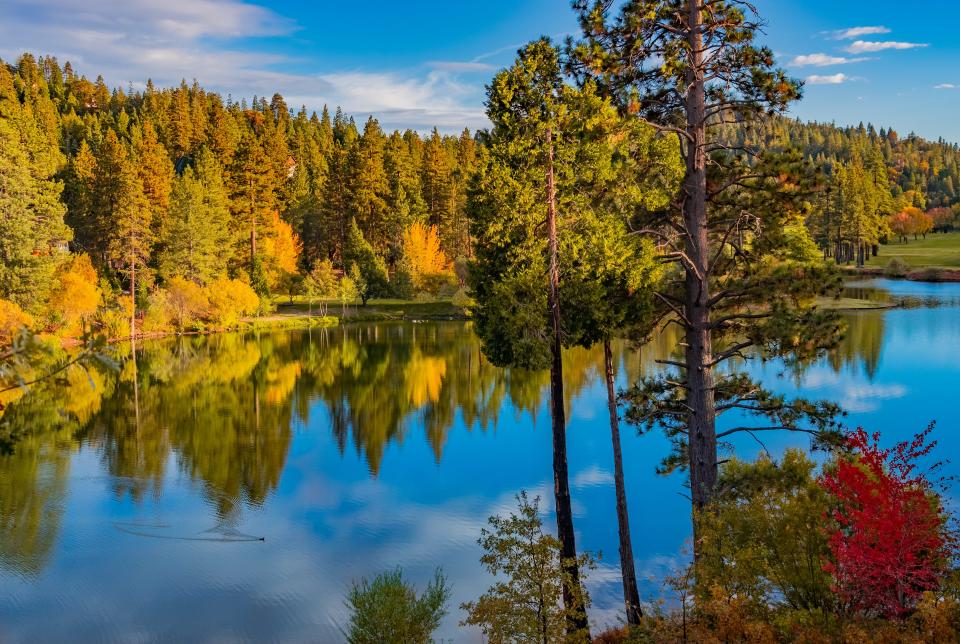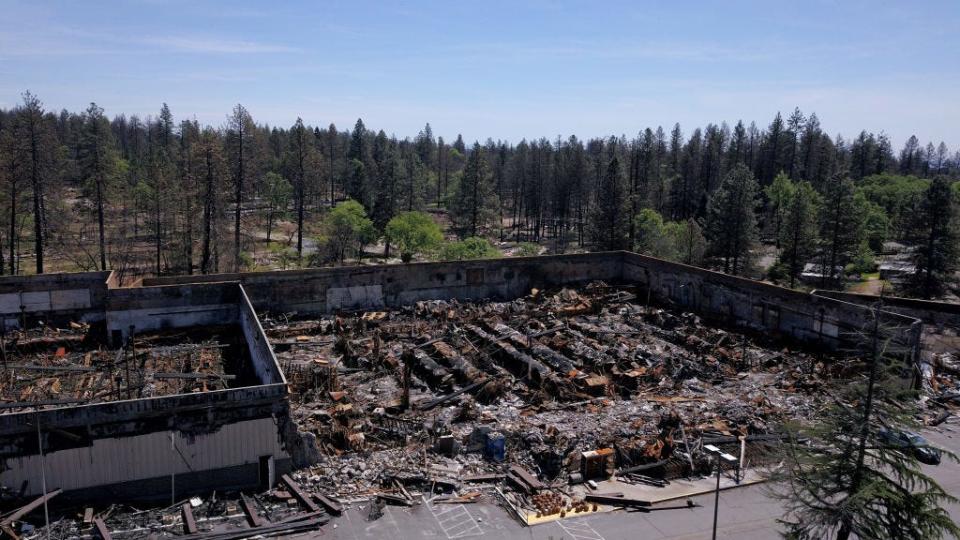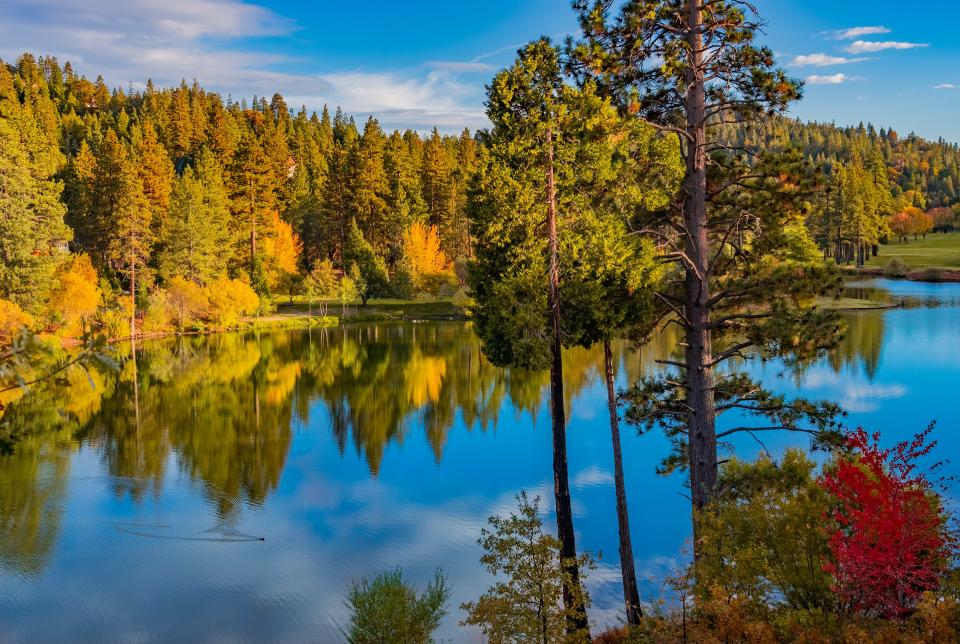-
I dreamed of living in Grass Valley for years — the Northern California city seemed so charming.
-
When I finally moved there in 2017, I realized it was an expensive, inconvenient place to live.
-
It was hard for me to connect with others and Grass Valley had a lot of discord among residents.
I’ve traveled a fair amount and often pass through a place and think, “I could live here.” Grass Valley, California, was one of those places for me.
I first discovered it in 1997, when my friends and I would stop there on our way to the mountains from San Francisco.
One morning, after a breakfast burrito and bottomless cup of coffee, I stood on the hill of the dreamy Victorian-lined main drag and wondered, “How does a person get to live here?”
Twenty years later, in 2017, I was living in Missoula, Montana, with my partner, Martin, who came home from work one day and told me he’d been offered a job that required him to live within 60 miles of Sacramento.
While Martin debated pros and cons, I quickly mapped Sacramento to Grass Valley — it was 56 miles.
He took the job, and we trusted the rest would fall into place. On a scouting trip, he agreed that Grass Valley seemed like a great place.
We both loved the architecture, the artsy, progressive community, the great restaurants, and the access to cities, the ocean, and the mountains.
But once we finally lived in the Northern California town, we realized we may have been better off just visiting.
The cost of living was more than we expected

We quickly learned our Grass Valley rent would be about double what we’d been paying in Missoula, so Martin wanted to buy.
But Califonia has extremely high housing costs in general. On the lower end of the spectrum in this area, we found many extremely rundown houses and many in remote areas with no internet or cell signal.
My vision of us exploring Berkeley, Lake Tahoe, and the wine country evaporated when it became clear that our only option was to sink our funds into a major fixer-upper.
At the time, I made my living as a massage therapist, and although I secured a job in our new town, my pay would also be about half what it was before.
The cost of living in Grass Valley is about 38.2% higher than the national average, which also didn’t help.
It was an inconvenient place to live
Grass Valley isn’t located on a major highway — there’s only one major road out in any direction — and it’s a 45-minute drive toward Sacramento to reach the suburban sprawl and the amenities that come with it.
Although we had plenty of cute boutiques in town, they primarily catered to tourists. I could buy incense or a great candle — and we were lucky to have a great running store and outdoor-gear shop — but forget about buying basics like bras and underwear in Grass Valley.
I also found our local grocery stores to be small, expensive, and poorly stocked.
In addition to the lack of commerce, the area felt like something of a healthcare desert. While we lived there, we had to travel for an hour to get to most medical appointments.
Northern California’s weather was extreme and dangerous

About six months after we moved to Grass Valley, California’s deadliest and most destructive wildfire took place less than 50 miles from us in a strikingly similar topography.
Most of Paradise was destroyed, and there was no denying that what happened there could also happen to our city. I spent the rest of my time living in Grass Valley with a go-bag either by the door or in my car in case we had to make a run for it.
In addition to the wildfire danger, the weather in Grass Valley is extreme. Summer temps hover in the 100 degrees Fahrenheit range for weeks, and winters are damp and wet.
The area has also had a lot of discord among residents
Grass Valley and neighboring Nevada City have a combined population of less than 20,000 and a lot of political, economic, and cultural diversity.
At heart are the rural locals descended from the Gold Rush miners who settled the town. But the melting pot also contains wealthy, Southern California conservative retirees, Bay Area liberals, back-to-the-land hippies, commercial cannabis growers, Burning Man attendees who rolled down the hill from Black Rock Desert, and a generous amount of white supremacists.
Big cities can contain such differences, but they sit on the surface in small towns, and the discord felt palpable.
When we moved to Grass Valley around the time of the 2018 presidential election, the US was already starkly divided — but the dial on everyone’s differences turned up more during the coronavirus pandemic.
Throughout 2020, our once quaint town was filled with protests, hate crimes, and violence.
Above all, I found it hard to connect with Grass Valley
Despite the fact that my best friends say I’ve “never met a stranger,” I didn’t make many lasting connections in Grass Valley. I made a few friends at work and was friendly with my immediate neighbors, but that’s about it.
I lived in Grass Valley for two and a half years, and three years after moving away, I’m only in touch with a few people.
After traveling often and living in 10 US states, I’ve seen enough to know that some places are best just to visit.
I live in New England now, close to my roots. It feels much more like home.
Read the original article on Business Insider
EMEA Tribune is not involved in this news article, it is taken from our partners and or from the News Agencies. Copyright and Credit go to the News Agencies, email news@emeatribune.com Follow our WhatsApp verified Channel





